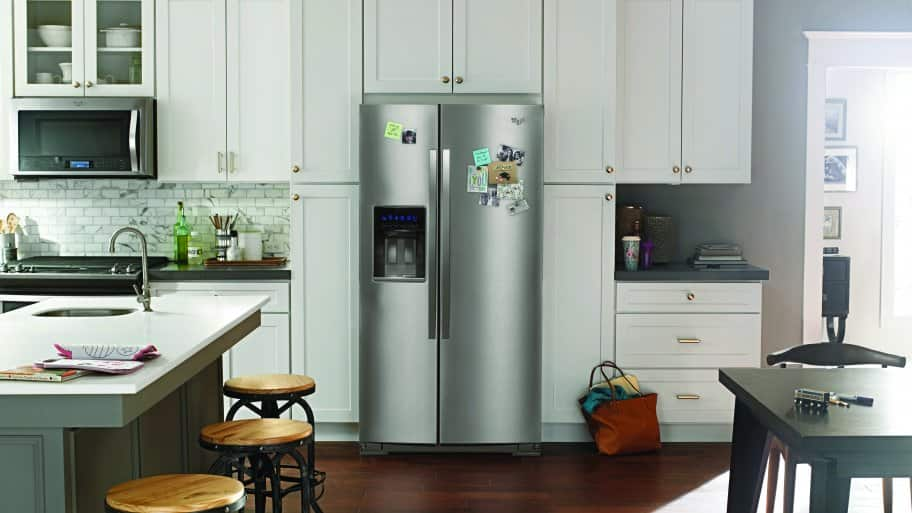Consider these moving tips before you load up and move a refrigerator to your new home.
Shipping a refrigerator is not as common as it once was. Many people who move will purchase the refrigerator with the house, rather than bringing their old one.
But, sometimes, shipping your refrigerator is the better option or maybe the new house does not have a fridge. Before you can make the decision on whether or not you want to ship your fridge, you need to figure out the dimensions of the area where you plan to move it.
If you are able take the dimensions yourself, you should. If you're unable to do it yourself, ask the current resident to measure for you. Take measurements of both the location where you plan to put the refrigerator, as well as doorways and hallways.
Making sure you are able to move your refrigerator into your new home before you start preparing for shipment is a very important step that should not be skipped. If the refrigerator doesn’t fit, you will need to make alternate plans.
Preparing your fridge for the move
Start by removing all items and packing the food separately from the refrigerator. It may be a good idea to try to use as much of the food as possible the week before it is time to move — the less perishable food to ship the better.
After all of the food is removed, turn off and unplug the refrigerator. Next, make sure that the refrigerator is clean and disinfected. Remember, as soon as the refrigerator is off there is a higher chance of mold growing.
To keep the mold from growing, after the refrigerator is clean, make sure it is completely dry. And to help with the smell, place baking soda in both the refrigerator and the freezer, so it will absorb any odors.
Note: The fridge should be turned off at least 24 hours prior to the move.
Once the refrigerator is clean and dry, decide whether or not you plan to remove or tape the shelves. Shelves and drawers will shift during shipment, which means they need to be demobilized before shipping.
If you can, it is safer to remove the shelves and drawers and wrap them in a separate box. And if they do not come out, make sure you tape them with clear tape.
Lastly, tape the doors to keep them from opening up on the moving truck or in transit. If you are shipping a refrigerator that is new or expensive and you are worried about dents or scratches, it is a good idea to wrap it with moving blankets.
Once the refrigerator has been wrapped, place a strap around both the moving blanket and refrigerator — this will keep both the doors shut along with prevent dents or scratches.
Moving companies, freight shipping, or DIY move?
There are multiple ways to ship a refrigerator — with a moving company (local or long distance), a freight company or you can do it yourself with the right-sized truck.
Moving Company: With a professional mover, the process is simple. Call to schedule an appointment and they will pick it up. The only thing you will need to do it decide between an economy or "white glove" shipment.
With an economy shipment, you will need to box your refrigerator and bring it to the curb. For a white glove shipment, they will come inside, wrap your refrigerator and load it on the truck. Both of these types of shipments will require all of the preparations listed above.
Freight Shipping: This requires crating. Moving blankets can still be placed on the refrigerator to help protect it from scratches and dents. Freight shipping is a better option for business-to-business shipping and extra-large refrigerators.
Do-it-Yourself: A DIY move requires a truck, dolly, straps and ramp. If you plan to move the refrigerator yourself, you will need to get the refrigerator into a truck without harming yourself or the refrigerator. Make sure your health is in good condition and that you are physically able to make a DIY move.
The last and very important step in shipping a refrigerator is waiting to plug it in. During transit, your refrigerator will most likely be put on its side and most definitely turned. In turning your refrigerator, the cooling may get moved and be in the wrong location.
Allowing your refrigerator to sit for a few hours (overnight if possible) before plugging it in is highly recommended.



No comments:
Post a Comment